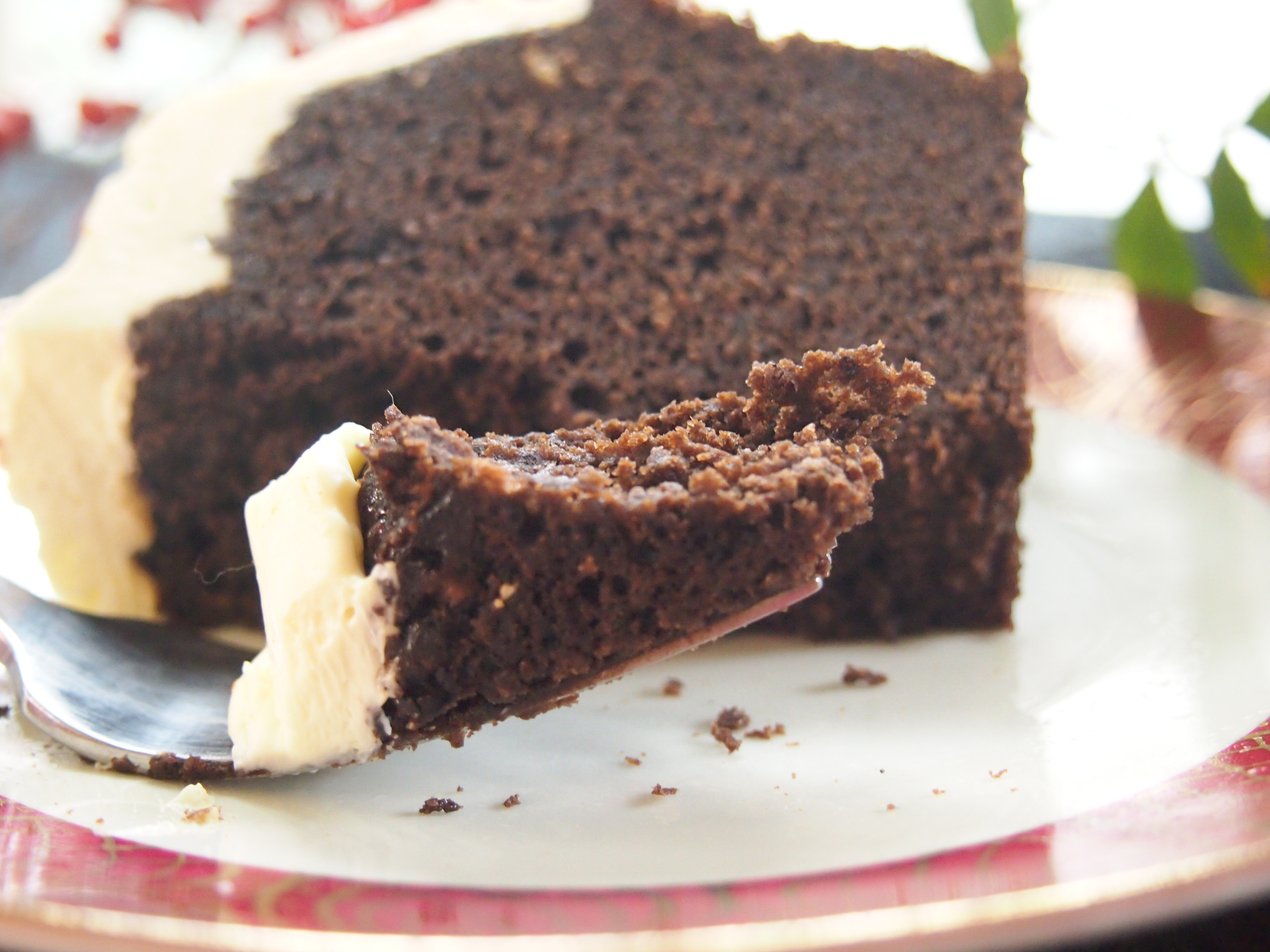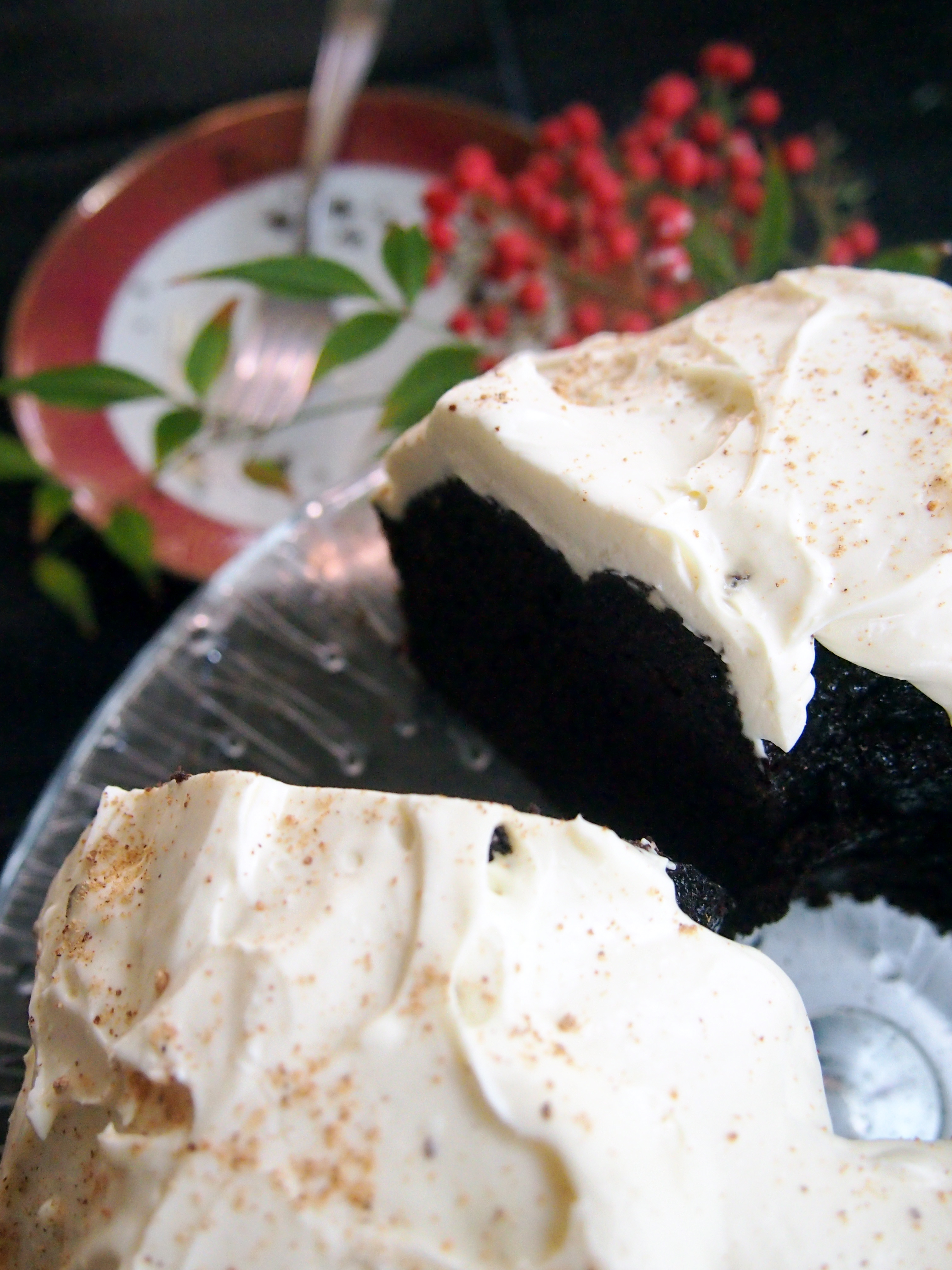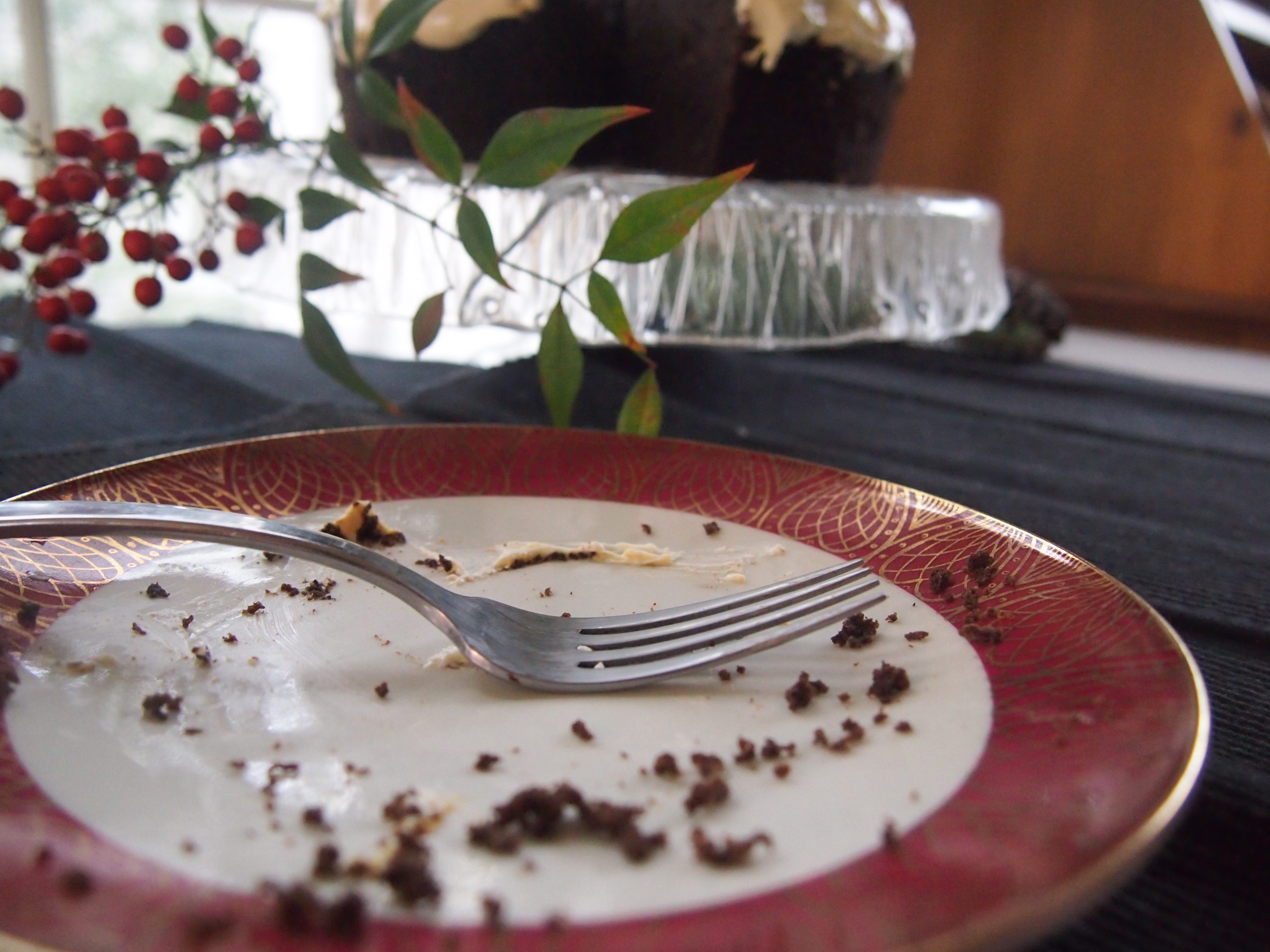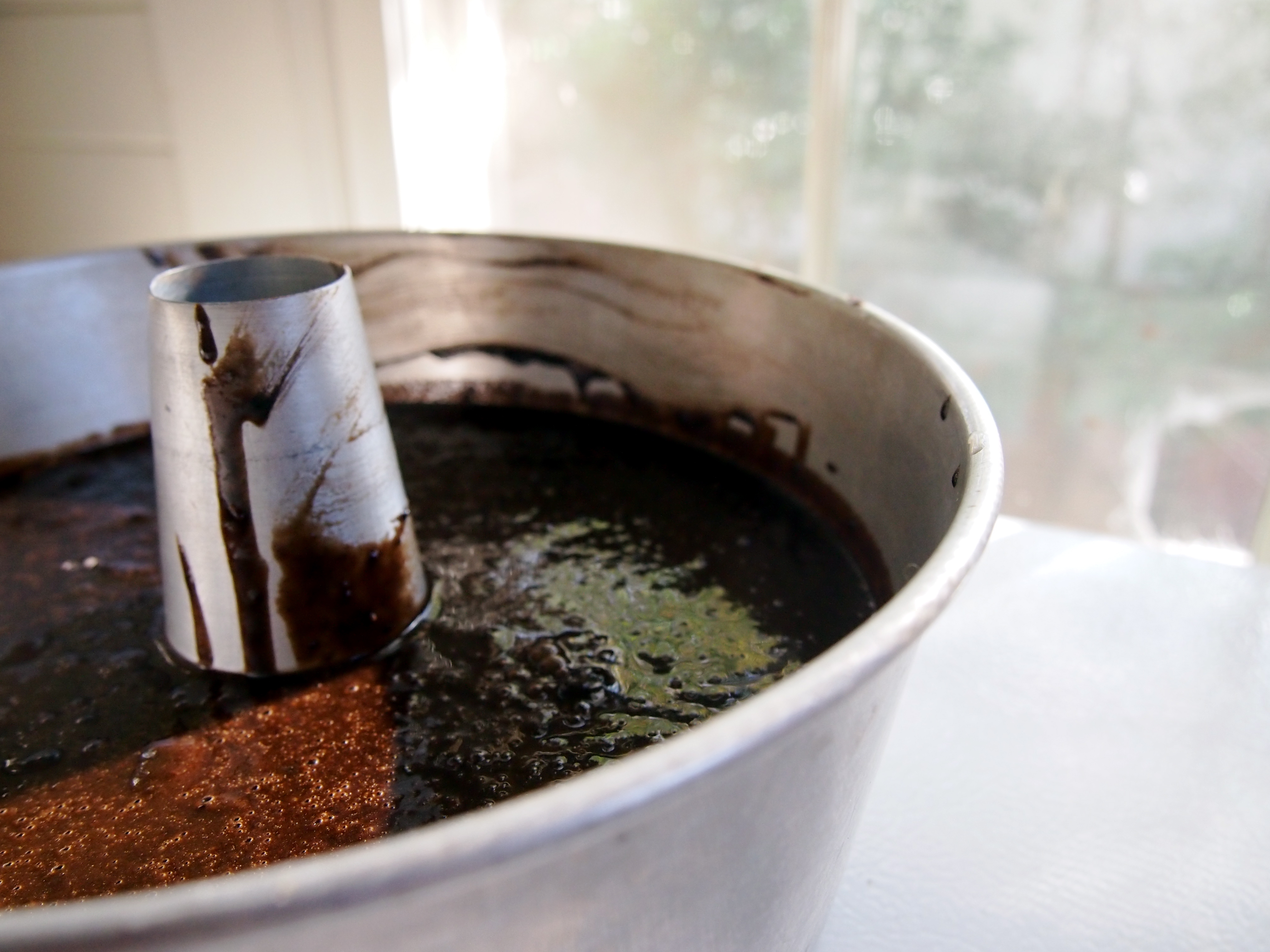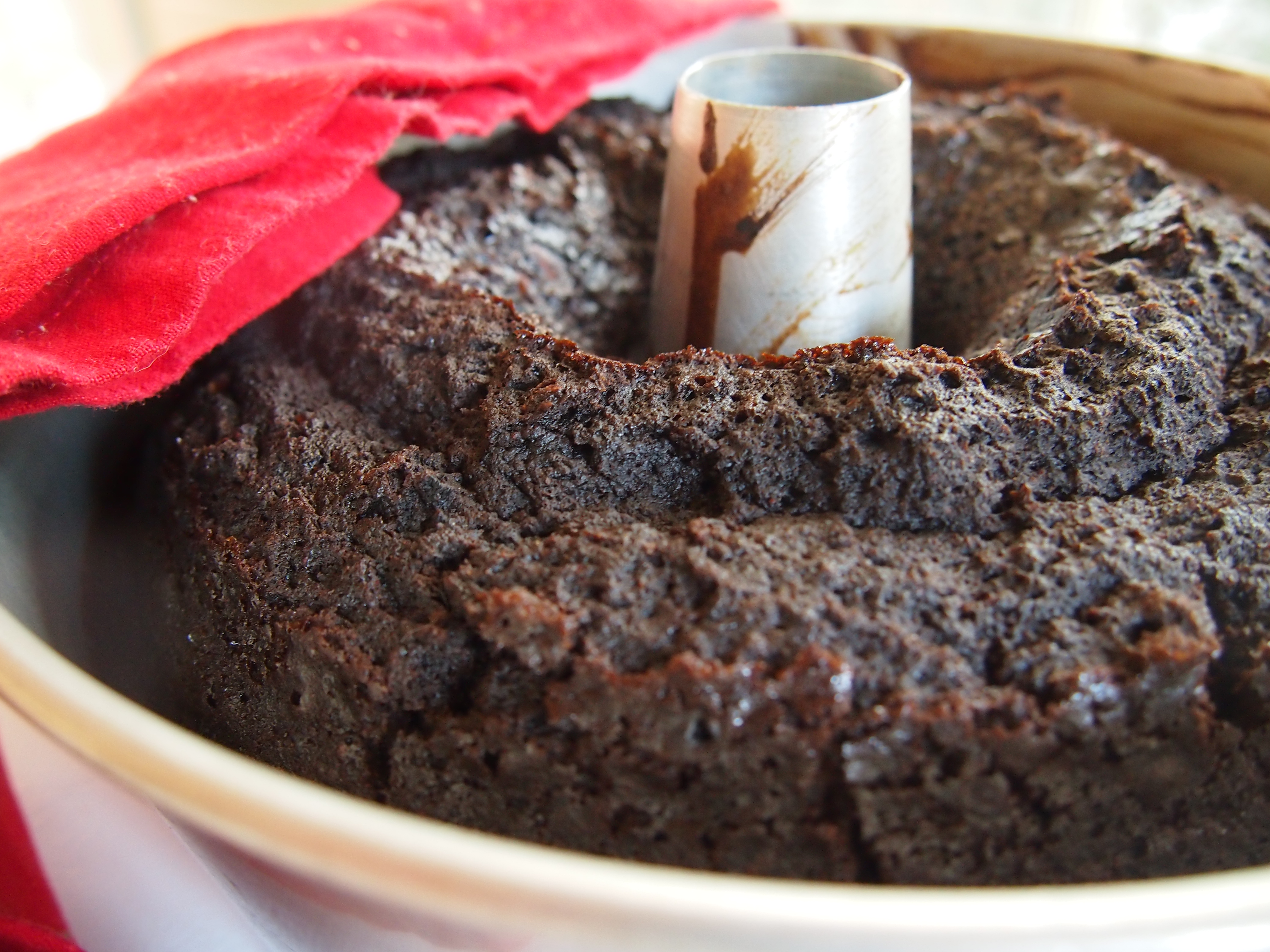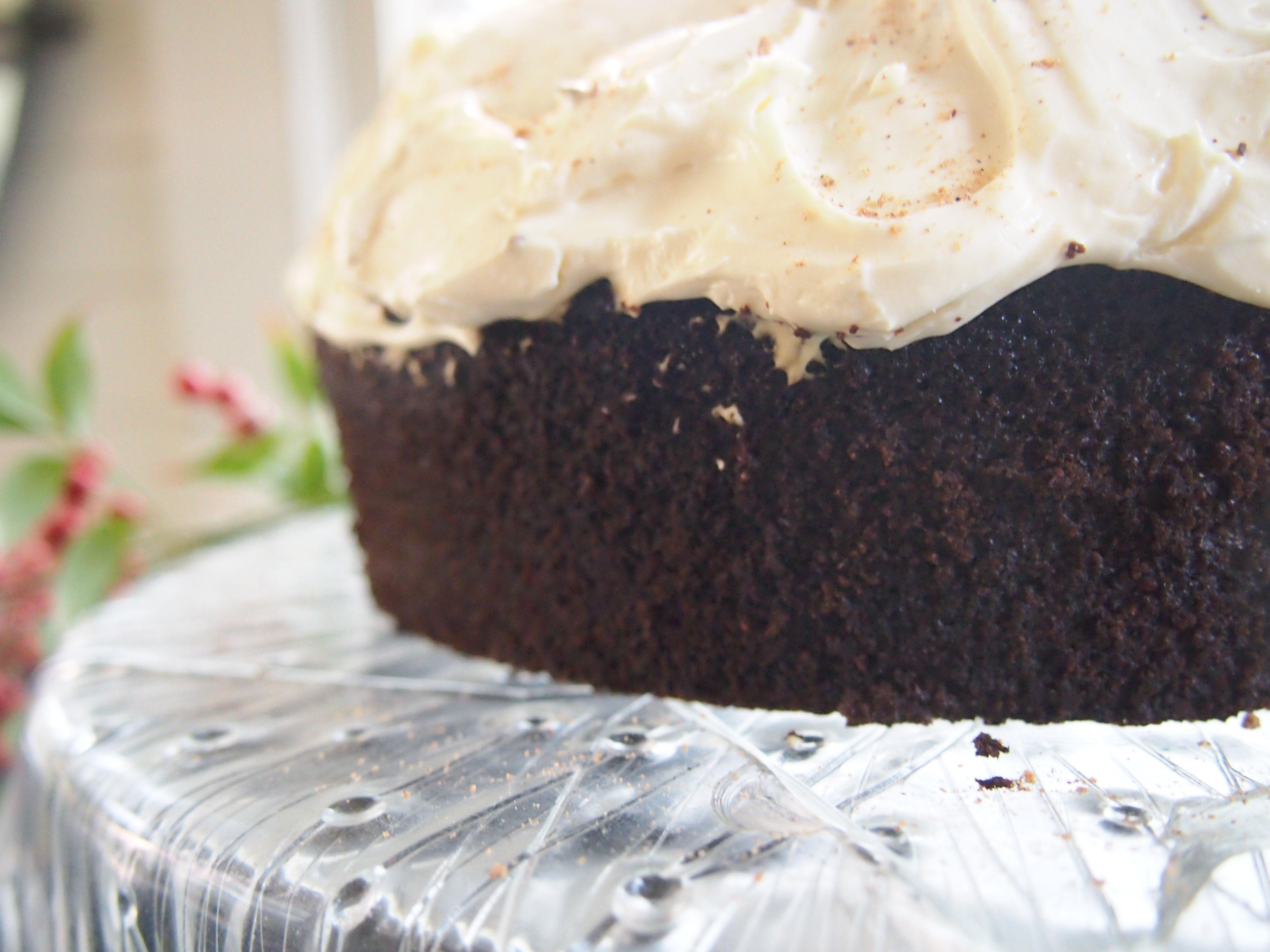
Have you ever happened to walk outside alone on Christmas Eve? It’s something of a private tradition of mine. On some pretext I leave the gathered family… must get something from the car…. anyone checked the mail?…just a moment. In that moment I step outside, the cold and the silence are indistinguishable. The chill cuffs my nose and swipes at my fingers. (I am inevitably under dressed, mistaking the warmth of good company for warmth of weather.) The silence thumps against my ears as the door closes behind me. Everything is muffled, from the boisterous sounds of family inside to the thrum of traffic. There aren’t even any summer insects to break the silence. It is still. And cold.
In that moment I am aware of the weight of tradition. I feel the presence of Christmases past, both those I’ve been a part of and those that aren’t mine to remember. So much expectation, merry-making, disappointment, loneliness, and hope bound to one night hangs heavy in the damp dark air.
I know the mysteriousness is mainly an invention of my own mind. Perhaps that the same stillness could be felt on other nights if only I were to take notice. But still.
This cake reminds me of that moment I seek out every year. It is combines the warm spice of gingerbread decorating, the stillness of dark chocolate melting on your tongue, and the malty tang of a stout drink enjoyed with friends. And it is most mysteriously dark. Because I used part coconut oil instead of all butter, this cake will stay moist for several days. I like it iced with a frothy whipped cream cheese icing. The cake seems to need it, just as we need to celebrate the light during the darkest time of year. However, neither the cake nor the frosting are extremely sweet. If you’d like a sweeter rather than tangy frosting, feel free to add more honey. I made my cake in a angel food cake pan, but I’m sure this would be beautiful baked in a more decorative bunt mold or even a simple loaf pan. (Note that this recipe makes 2 loaf cakes. If you just want one, cut the recipe in half.) Though if you do use a decorative pan, you might want to consider leaving it unfrosted and instead dusting it with some powdered sugar or even finely shredded coconut.
Christmas Eve Cake
Inspired by Nigella Lawsons’
Chocolate Guinness Cake and the Stout Gingerbread Cake in
The Last Course: The Desserts of Grammercy TavernFor the cake:
1 bottle of dark spicy beer, such as Guinness extra stout
1 cup dutched cocoa powder
2cup molasses
1 T baking soda
6 eggs
1/3 cup sugar honey
1/2 coconut oil
1 cup butter, softened
4 cups white whole wheat or whole wheat pastry flour, as you wish
4 T ground ginger
2 T ground cinnamon
2 tsp ground cloves
2 tsp freshly grated nutmeg
2 tsp ground grains of paradise or freshly ground black pepper
2 tsp ground cardamom
4 T freshly grated gingerFor the icing:1 package of cream cheese, softened
a drizzle of honey (1/8- 1/4 cup, as you wish)
1/2 cup heavy creamPreheat the oven to 350°. Generously butter your pan(s). (See note above.) In a large saucepan over medium high heat, bring the beer, honey, and molasses to a boil. Seriously, get a really large pan. Beer is volitale and boils over easily, as my kitchen floor can attest. Once it’s boiled, take it off the heat and add the baking soda. Stir very very gently. Let it sit as the foam settles itself down. When there is enough space in the pot, add the butter and coconut oil, using the residual heat to melt. Let it cool to baby bath temperature.Meanwhile, mix together the flour, cocoa, and spices, except the fresh ginger in a large bowl. In another large bowl, beat the eggs. Add the molasses mixture to the eggs and mix well. Make a well in the flour mixture and pour the liquid into the dry ingredients. Mix until just blended. Add the fresh ginger and mix gently.
Pour the batter into your pan, gently tapping it on the counter to release any air bubbles. Bake in the oven for 60-90 minutes for bundt pan, and slightly less for loaf pans. It’s done when the top springs back gently when pressed. Though it can be hard to see, if it smells like it’s getting too dark, cover the top with foil until the rest of the cake is done.
Remove it from the oven and let cool for a couple minutes before running a knife or spatula around the sides. Gently release the cake from the pan and let cool completely on a rack before frosting.
In a food processor of stand mixer, beat the cream cheese till it’s light and fluffy. Add the honey and cream and beat again until frothy. Frost the cake with a liberal hand. Dust the top with extra spices if you’d like or leave it immaculately white.

Posted 13 years, 5 months ago at 8:10 am. Add a comment
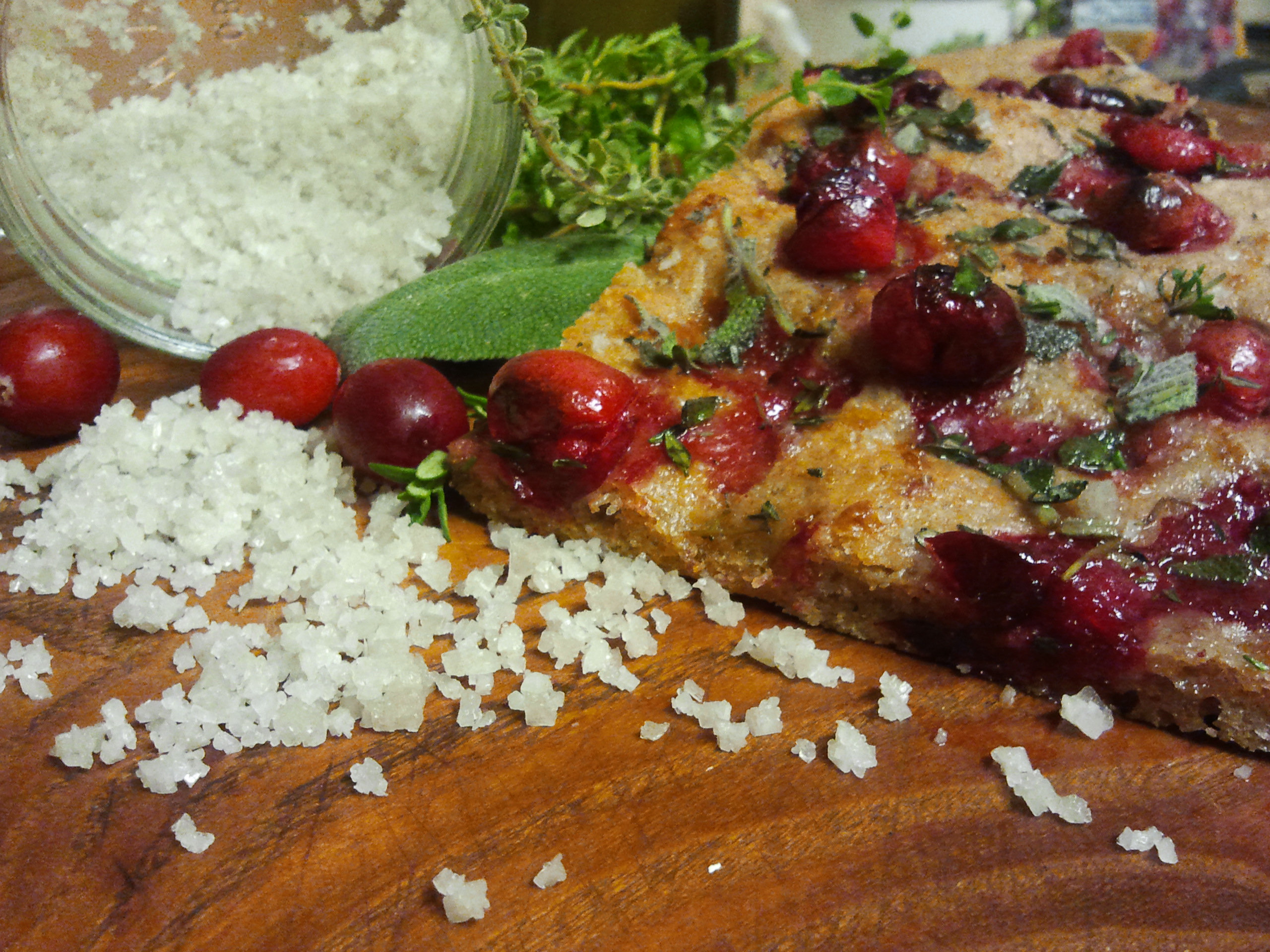 Focaccia is another of those recipes that is redolent with memories. I was introduced to this Italian snack in its simplest form, topped with olive oil and salt during college. The humanities department would have semi-regular meetings where all the professors and students would gather together. (It was a small school, so this wasn’t as big an ordeal as it may seem.)
Focaccia is another of those recipes that is redolent with memories. I was introduced to this Italian snack in its simplest form, topped with olive oil and salt during college. The humanities department would have semi-regular meetings where all the professors and students would gather together. (It was a small school, so this wasn’t as big an ordeal as it may seem.)
While we heard tell that other departments had the usual spread of chips, cookies, and soda, we were favored with homemade focaccia baked by our beloved secretary Elizabeth Davis. While she usually tried to keep a low profile in meetings, there was no disguising the warm yeasty smell that accompanied her through the door. She and her bread were the center of everyone’s attention. Even if we tried to politely finish listening to whomever was speaking, our minds and hearts were with her and the bread she was slicing.
Her focaccia stands in my memory as a culinary beacon of hope in an otherwise dreary foodscape of cafeteria food and boxed cereal. It was beguiling in its simplicity, managing to be both fluffy and crisp at the same time. The olive oil, warmed by the bread, pooled in the fingertip deep wells, dribbling over the sides when it was cut. The more refined among us ate with a napkin in hand to dab at the drips. Call me rustic, but I could never resist licking my fingers clean of the buttery oil mingled with the sharp bite of salt.
While plain and simple focaccia still heats my oven, I have recently been enamored with recipes using seasonal fruits, like this Grape and Rosemary Focaccia from Nourished Kitchen. Living in the South, I made it with muscadines rather than concord grapes, but the combination of peppery olive oil, sticky sweet grapes, and salty herbs worked its way into my blood. Sadly, muscadine season is painfully short. Nowhere near long enough to satisfy my craving. When cranberries started poking around the produce, I saw my way clear.
While this recipe is obviously evocative of Thanksgiving, I won’t lie and say I’m not stashing a few bags of cranberries in my freezer so I can enjoy this a few months down the line.

Sourdough Focaccia with Cranberries, Sage, and Thyme
Inspired by recipes at Nourished Kitchen and The Fresh Loaf
1 cup frothy 100% hydration sourdough starter
1 cup tepid water
1 cup extra virgin olive oil, divided
2 cups whole wheat flour
2 cups white whole wheat flour
3 tsp salt
~ 1/2 a bag of cranberries
2 T chopped fresh sage
1 T chopped fresh thyme
2-3 T unrefined coarse sea salt
In the bowl of a stand mixer, combine the starter and water. Mix briefly to break up the starter. Add 1/4 cup olive oil, one cup each of the flours, and the salt. With a dough hook, mix the dough until it comes together. If it’s still excessively sticky, add more flour until it becomes more manageable– it can stick to your fingers, but it shouldn’t coat your hand like a glove if you try to knead it. Let the mixer knead it until you can stretch a piece paper thin, about 10 minutes. Roll it into a ball, drizzle the bowl with olive oil and turn the dough to coat. Cover with plastic wrap and place in the fridge over night.
The next day, let the dough come up to room temperature, about 60-90 minutes. Rub olive oil onto a 9×13 baking sheet. Pat the dough out to fit the baking sheet and let it rise, covered, in a warm place for 2-3 hours, until it looks puffy and doubled. Meanwhile, preheat the oven to 475°. After the dough has risen, use your finger tips to make several indentations in the dough. Not holes, just dips. Drizzle an ample amount of olive oil over the dough and down its sides. The bread is essentially going to fry on top, so do be generous. Sprinkle the coarse salt and then spread the cranberries out. They might roll into great cranberry canyons, so you might need to press them gently into place.
Bake in the oven for 20-30 minutes, until the top is golden and crisp. Take it out of the oven and drizzle some more olive oil and scatter the herbs over the top. Using a pizza cuter, cut the focaccia into squares. Serve hot or a room temperature. If you happen to have leftovers, it makes a fabulous breakfast reheated in a toaster oven for about 5 minutes.
This post is participating in YeastSpotting, a “weekly showcase of yeasted baked goods and dishes with bread as a main ingredient” hosted by Wild Yeast, though guest hosted this week by Hefe und mehr.
Posted 13 years, 6 months ago at 9:59 pm. 3 comments
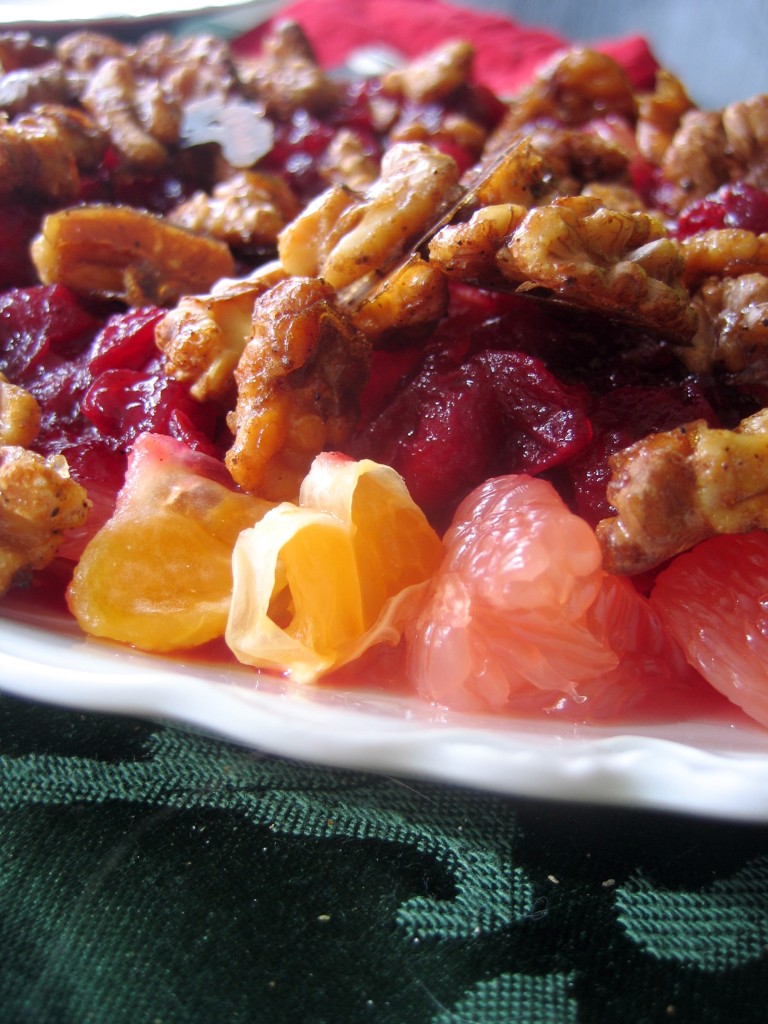 I love citrus. While most cookbooks and online recipe forums seem to think that citrus is best enjoyed in the dog days of summer, I love that it’s true season is actually the mid- winter months. Like a doting grandmother who slips you a bright little foil wrapped piece of candy in that long half hour before dinner, citrus waits till the dark days of winter to ripen.
I love citrus. While most cookbooks and online recipe forums seem to think that citrus is best enjoyed in the dog days of summer, I love that it’s true season is actually the mid- winter months. Like a doting grandmother who slips you a bright little foil wrapped piece of candy in that long half hour before dinner, citrus waits till the dark days of winter to ripen.
While it’s true that citrus isn’t necessarily local, unless you happen to live in Florida, California, or parts of Texas, it is a seasonal fruit, just like anything else. So, while most of us can’t buy citrus from one of our farmer friends, it is still possible to buy it at the peak of its season when it’s freshest, imported the least number of miles, and most importantly– tastiest. For me, that means taking advantage of the natural down time that winter gives us and chowing down on all the grapefruits, tangerines, oranges, clementines, lemons, limes, pomelos, and tangelos I can eat. Peggy Bourjaily wrote an excellent piece for NPR’s Kitchen Window series about this practical locavorism.
Citrus in winter is also a nostalgic thing for me. Truth be told, I would probably eat it in the winter even if it wasn’t in season then. (Conveniently enough though, I get to keep my moral high ground.) As kids, we would always get an orange in the toe of our stocking at Christmas. I don’t know how often we actually ate the orange, but it was of utmost importance that it was there. Since starting our own Christmas traditions, Mr. Quotidian and I have dispensed with the usual stockings filled with odds and ends that end up getting lost or broken in a few weeks. Instead, we leave a pad of paper and pencil by the stockings and write down memories of the other person, then put the memory in the other’s stocking. So, by Christmas morning, we have stockings stuffed with memories. I love the tradition, but obviously an orange would feel rather out of place in such a situation. However, a Christmas without citrus seemed hollow and dull. I realized the easiest way to solve the situation was to serve citrus at one of our Christmas meals. Since citrus doesn’t do well with a cheese fondue, Christmas Eve was out. However, when I remembered a recipe for a salad using oranges and cranberries, Christmas brunch seemed the ideal way to include this jolly, festive fruit. New Year’s brunch would be delicious too…paired with a mimosa perhaps? Continue Reading…
Posted 14 years, 5 months ago at 6:52 pm. 1 comment
 No other time of year seems to hold as many traditions for me as Christmas. The ornaments get hauled up from the basement, the dust blown off the old pear boxes they’re stored in. Each is carefully unswaddled from its nest of ten year old paper towel and hung on the tree. Little Bethlehems are constructed throughout the house, forming a kind of Yuletide suburban sprawl. Each of the mangers stay empty until Christmas morning. The soundtrack changes frequently as each of us takes our turn choosing our favorite music. Little Brother with Mannheim Steamroller, me with Bing Crosby and Ella Fitzgereld, Mom with hymns.
No other time of year seems to hold as many traditions for me as Christmas. The ornaments get hauled up from the basement, the dust blown off the old pear boxes they’re stored in. Each is carefully unswaddled from its nest of ten year old paper towel and hung on the tree. Little Bethlehems are constructed throughout the house, forming a kind of Yuletide suburban sprawl. Each of the mangers stay empty until Christmas morning. The soundtrack changes frequently as each of us takes our turn choosing our favorite music. Little Brother with Mannheim Steamroller, me with Bing Crosby and Ella Fitzgereld, Mom with hymns.
And then there are the nine different tins of Christmas cookies piled on the counter. Their colors a hodgepodge of cheery greens, wintery blues, rich reds, and ornate golds. Inside each tin is a different cookie– mixing of different cookies into the same tin is strictly forbidden. The cookies range from simple peanut clusters that take just minutes to make to Springerale cookies that get printed with a special rolling pin, cut apart, then left out to dry overnight. Chocolate pinwheels look fancy but are easy to make. Of course sugar cookies make their appearance, the amount of frosting and sprinkles adorning Rudolph’s antlers directly correlating to the age of the person who decorated them.
Somewhere in that pile of tins lies the gingerbread men. These always arrived with grandma’s return address on the box. There was exactly one gingerbread cookie per person. But we never thought we were getting jipped. These weren’t just any gingerbread cookies. As a child, they were as big as my face. I know this because I did it . . . holding the cookie up to my face and inhaling the sweet spicy scent. And they were intricately decorated with all different colors of frosting. The gingerbread men had textured vests and pants. The gingerbread girls had striped skirts and braids that looked almost real. They were the kind of cookies that the children in “The Night Before Christmas” dreamed about. Because they were so big, these cookies were eaten piecemeal . . . an arm or a leg at a time. Each of of us had a different method of decimating our cookie. I worked in a clockwise pattern starting with the head. Continue Reading…
Posted 14 years, 5 months ago at 5:14 pm. Add a comment
This started out as my grandmother’s recipe. But, in the several times I’ve made it, it has become my own. While I keep it traditional for Thanksgiving, I play around with it at other times. It’s a great way to use up stale bread of any kind. It is another recipe that is very adaptable to whatever you can imagine. Play with it. I’ve made a Greek dressing using extra garlic and oregano. Next time I make it, I want to try a Ruben-esque theme- rye bread, caraway seeds, and corned beef. Continue Reading…
Posted 15 years, 5 months ago at 12:59 pm. 1 comment
I love roasted vegetables. Roasting intensifies flavors instead of seeping them into water, the way boiling does. Of all vegetables that I’ve roasted, broccoli comes in second only to potatoes. Broccoli just seems to be meant for the oven. The whole stalk caramelizes and all of the little “leaves” get crispy. Add Parmesan cheese to that, and what not to love? Velveeta cannot compare. Continue Reading…
Posted 15 years, 5 months ago at 12:58 pm. Add a comment
I just have one word of advise for this recipe: More. Always make more mashed potatoes than you think you’ll need. Not only are they a tasty (and thrifty) meal stretcher, but leftover potatoes can be turned into fried potato patties which are quite possibly the mother of all comfort food. Continue Reading…
Posted 15 years, 5 months ago at 12:57 pm. Add a comment
